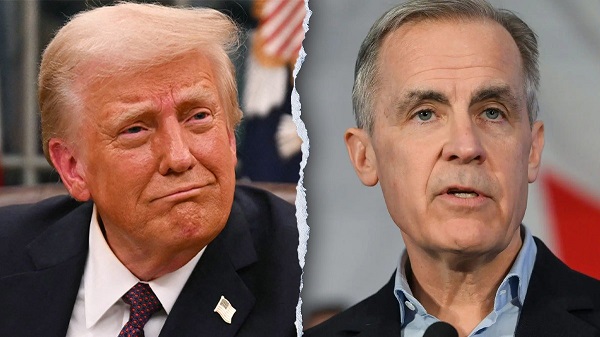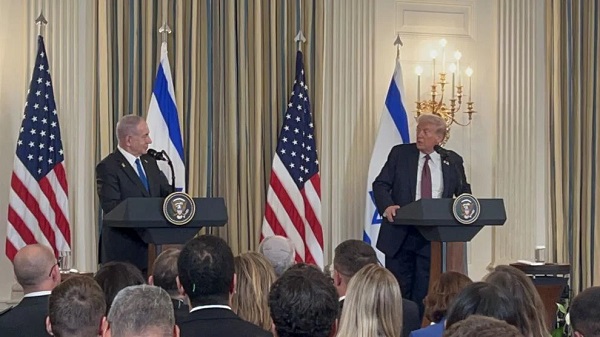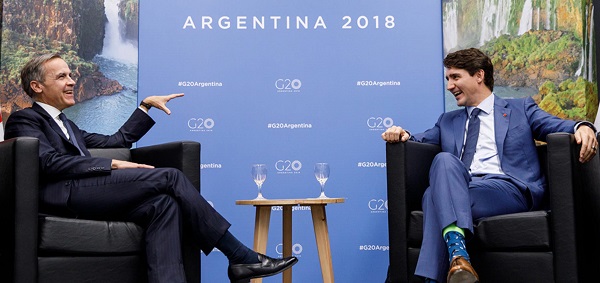Business
Netherlands Seizes Chinese-Owned Chipmaker in Unprecedented Security Move

Court-approved removal of executive Zhang Xuezheng bears hallmarks of counter-intelligence concern
The Dutch government has taken control of Chinese-owned semiconductor manufacturer Nexperia, invoking an urgent national-security law directed at Beijing to safeguard Europe’s access to critical technology used across the automotive and electronics industries.
In a statement issued late Sunday, the Ministry of Economic Affairs said it had taken the “highly exceptional” decision to invoke the Goods Availability Act on September 30. The move followed “recent and acute signals” of such “significant scale and urgency” involving “serious governance shortcomings and actions within Nexperia” that Minister Vincent Karremans was compelled to intervene.
“The decision aims to prevent a situation in which the goods produced by Nexperia would become unavailable in an emergency,” the ministry said.
“These signals posed a threat to the continuity and safeguarding on Dutch and European soil of crucial technological knowledge and capabilities. Losing these capabilities could pose a risk to Dutch and European economic security.”
It is not known what specific information Dutch authorities gathered on Nexperia executive Zhang Xuezheng, who has been suspended from all management and board positions, but the move, approved by the Amsterdam Court of Appeal, has the hallmarks of a national security alert deemed severe by Dutch lawmakers.
Nexperia, headquartered in Nijmegen, produces semiconductors used widely in the European automotive industry and consumer electronics and is a key link in the continent’s industrial supply chain. The government said normal production will continue, but Karremans now has powers to block or reverse company decisions that could harm national or European interests.
The ministry’s order bars Nexperia and all its global subsidiaries, branches, and offices from making any adjustments to their assets, intellectual property, business operations, or personnel for one year.
Nexperia’s Chinese parent company, Wingtech Technology Co., a Shanghai-listed conglomerate placed on the U.S. Commerce Department’s Entity List in 2023, denounced the Dutch move, saying it “constitutes an act of excessive interference driven by geopolitical bias, not by fact-based risk assessment.” Wingtech said the measure “gravely contravenes the European Union’s long-standing advocacy for market-economy principles, fair competition, and international trade norms,” and “strongly” protested “discriminatory treatment toward a Chinese-owned enterprise.”
Wingtech disclosed to the Shanghai Stock Exchange that it had been notified of the Dutch order on September 30, but the government did not make the intervention public until October 12.
The Dutch government’s action marks the first time the Netherlands has used its emergency powers to seize control of Chinese-state linked company — an escalation that mirrors Washington’s strategic-industrial posture and signals Europe’s entry into a new era of techno-sovereignty.
In Britain, Nexperia’s ownership structure had already triggered alarm. In 2021, the company’s acquisition of Newport Wafer Fab, the UK’s largest semiconductor plant, was blocked by the Conservative government over national-security fears. The UK later ordered Nexperia to divest most of its stake under the National Security and Investment Act in 2022.
The controversy resurfaced this year amid the collapse of a high-profile espionage prosecution under Prime Minister Keir Starmer’s government. The Mail on Sunday reported, citing an unidentified source, that Christopher Berry—one of two men previously charged with spying for China—“sent details of the row within government on the Newport Wafer Fab semiconductor factory, which was initially sold to Nexperia but later blocked by the Conservative government over national-security fears.”
The Netherlands’ intervention follows escalating moves by allied governments to tighten control over critical-tech supply chains. Just days earlier, Beijing imposed sweeping export restrictions on rare-earth minerals, essential for cars, wind turbines, and electronics, citing “national security” grounds — mirroring Western justifications for semiconductor controls. The action drew a strong counter-threat from U.S. President Donald Trump, who warned that Washington could impose 100 percent additional tariffs on all Chinese goods if Beijing “weaponizes its mineral dominance.”
A semi-detente appeared to emerge after Trump’s weekend remarks suggesting a pause in escalation. But the Dutch government’s unilateral action underscores a global race to secure access to critical industrial components amid fears of spreading conflict in Europe and rising tensions in Asia.
The Bureau is a reader-supported publication.
To receive new posts and support my work, consider becoming a free or paid subscriber.
Business
Truckers see pay surge as ICE sweeps illegal drivers off U.S. highways
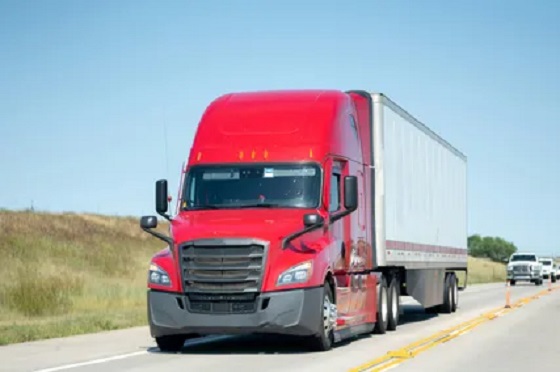
Quick Hit:
American truckers say they’re finally earning more per mile as President Donald Trump’s enforcement push clears illegal drivers off U.S. highways. Truckers have reported 50% pay increases on some routes following a surge of ICE activity and Transportation Secretary Sean Duffy’s crackdown on safety and work permit violations.
Key Details:
- A trucker on X said his usual Chicago-to-Fargo run jumped from $1,200 to $1,800, crediting the Trump administration’s immigration enforcement for thinning out illegal competitors.
- ICE and federal transportation officials have detained or removed illegal drivers in multiple states, with reports of Serbian and Indian drivers losing their commercial licenses after failing to prove legal entry into the U.S.
- FreightWaves founder Craig Fuller noted spot rates have risen about 2% despite weak demand, as “bottom feeders” who undercut prices are being “squeezed out of the market.”
Diving Deeper:
As President Trump’s immigration enforcement intensifies, American truckers are seeing something rare in a sluggish cargo economy: rising wages. Across online freight boards and social media, truckers are crediting the administration’s “Compliance Crunch” — a combination of ICE raids and new safety regulations — for clearing out illegal drivers who had been depressing pay rates for years.
One trucker wrote on X that his typical Chicago-to-Fargo route, which paid $1,200 before the election, now brings in $1,800. “Needless to say, I took him up on the offer,” he posted. “Lord do I hope this hangs around a little bit.”
Transportation Secretary Sean Duffy has been enforcing long-ignored safety and documentation rules, targeting companies that hired drivers without valid immigration status or complete customs paperwork. “We have Americans who’ve been in trucking for 50 years through family businesses,” Duffy told Fox News on October 8. “They can’t do business anymore because you have these illegals coming in, living out of their trucks… they can’t speak the language, and they come in under price — way under price.”
According to reports from The Serbian Times, at least fifteen Serbian drivers have been detained in recent days, and agents have begun seizing commercial driver’s licenses from migrants lacking proof of legal entry. Many of these drivers, primarily from Eastern Europe and South Asia, were able to operate under the Biden administration with minimal oversight — often undercutting legitimate American drivers by accepting lower pay.
Craig Fuller of FreightWaves observed that even though freight volumes remain “anemic,” per-mile spot rates rose roughly 2% as noncompliant firms exit the market. “We are seeing the bottom feeders get squeezed out,” he wrote, adding that most contract carriers haven’t yet felt the wage impact but likely will as enforcement spreads.
Industry experts say nearly one-third of the nation’s freight has been hauled by non-citizen drivers, which trucking analyst Bill Skinner called “not just a safety issue — it’s a national security risk.”
While some corporate logistics networks such as Amazon and Walmart may eventually argue that higher trucking wages could drive up costs, analysts note that the increases are modest and likely offset by fewer accidents, delays, and fraud cases tied to unlicensed or illegal operators.
Business
Your $350 Grocery Question: Gouging or Economics?
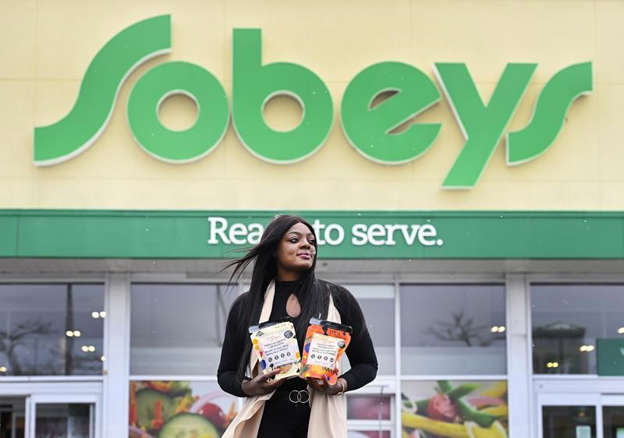
Dr. Sylvain Charlebois, a visiting scholar at McGill University and perhaps better known as the Food Professor, has lamented a strange and growing trend among Canadians. It seems that large numbers of especially younger people would prefer a world where grocery chains and food producers operated as non-profits and, ideally, were owned by governments.
Sure, some of them have probably heard stories about the empty shelves and rationing in Soviet-era food stores. But that’s just because “real” communism has never been tried.
In a slightly different context, University of Toronto Professor Joseph Heath recently responded to an adjacent (and popular) belief that there’s no reason we can’t grow all our food in publicly-owned farms right on our city streets and parks:
“Unfortunately, they do have answers, and anyone who stops to think for a minute will know what they are. It’s not difficult to calculate the amount of agricultural land that is required to support the population of a large urban area (such as Tokyo, where Saitō lives). All of the farms in Japan combined produce only enough food to sustain 38% of the Japanese population. This is all so obvious that it feels stupid even to be pointing it out.”
Sure, food prices have been rising. Here’s a screenshot from Statistics Canada’s Consumer Price Index price trends page. As you can see, the 12-month percentage change of the food component of the CPI is currently at 3.4 percent. That’s kind of inseparable from inflation.

But it’s just possible that there’s more going on here than greedy corporate price gouging.
It should be obvious that grocery retailers are subject to volatile supply chain costs. According to Statistics Canada, as of June 2025, for example, the price of “livestock and animal products” had increased by 130 percent over their 2007 prices. And “crops” saw a 67 percent increase over that same period. Grocers also have to lay out for higher packaging material costs that include an extra 35 percent (since 2021) for “foam products for packaging” and 78 percent more for “paperboard containers”.
In the years since 2012, farmers themselves had to deal with 49 percent growth in “commercial seed and plant” prices, 46 percent increases in the cost of production insurance, and a near-tripling of the cost of live cattle.
So should we conclude that Big Grocery is basically an industry whose profits are held to a barely sustainable minimum by macro economic events far beyond their control? Well that’s pretty much what the Retail Council of Canada (RCC) claims. Back in 2023, Competition Bureau Canada published a lengthy response from the RCC to the consultation on the Market study of retail grocery.
The piece made a compelling argument that food sales deliver razor-thin profit margins which are balanced by the sale of more lucrative non-food products like cosmetics.
However, things may not be quite as simple as the RCC presents them. For instance:
- While it’s true that the large number of supermarket chains in Canada suggests there’s little concentration in the sector, the fact is that most independents buy their stock as wholesale from the largest companies.
- The report pointed to Costco and Walmart as proof that new competitors can easily enter the market, but those decades-old well-financed expansions prove little about the way the modern market works. And online grocery shopping in Canada is still far from established.
- Consolidated reporting methods would make it hard to substantiate some of the report’s claims of ultra-thin profit margins on food.
- The fact that grocers are passing on costs selectively through promotional strategies, private-label pricing, and shrinkflation adjustments suggests that they retain at least some control over their supplier costs.
- The claim that Canada’s food price inflation is more or less the same as in other peer countries was true in 2022. But we’ve since seen higher inflation here than, for instance, in the U.S.
Nevertheless, there’s vanishingly little evidence to support claims of outright price gouging. Rising supply chain costs are real and even high-end estimates of Loblaw, Metro, and Sobeys net profit margins are in the two to five percent range. That’s hardly robber baron territory.
What probably is happening is some opportunistic margin-taking through various selective pricing strategies. And at least some price collusion has been confirmed.
How much might such measures have cost the average Canadian family? A reasonable estimate places the figure at between $150 and $350 a year. That’s real money, but it’s hardly enough to justify gutting the entire free market in favor of some suicidal system of central planning and control.
-

 Media1 day ago
Media1 day agoResponse to any budget sleight of hand will determine which audience media have decided to serve
-

 Frontier Centre for Public Policy1 day ago
Frontier Centre for Public Policy1 day agoCanada’s Democracy Is Running On Fumes
-

 Business1 day ago
Business1 day agoYour $350 Grocery Question: Gouging or Economics?
-

 Education1 day ago
Education1 day agoClassroom Size Isn’t The Real Issue
-
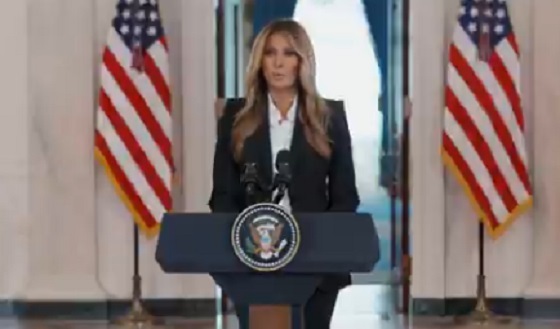
 International19 hours ago
International19 hours agoMelania Trump quietly reunites children divided by Ukraine war
-

 illegal immigration19 hours ago
illegal immigration19 hours ago$4.5B awarded in new contracts to build Smart Wall along southwest border
-

 COVID-199 hours ago
COVID-199 hours agoThe Trials of Liberty: What the Truckers Taught Canada About Power and Protest
-

 Business2 hours ago
Business2 hours agoTruckers see pay surge as ICE sweeps illegal drivers off U.S. highways





